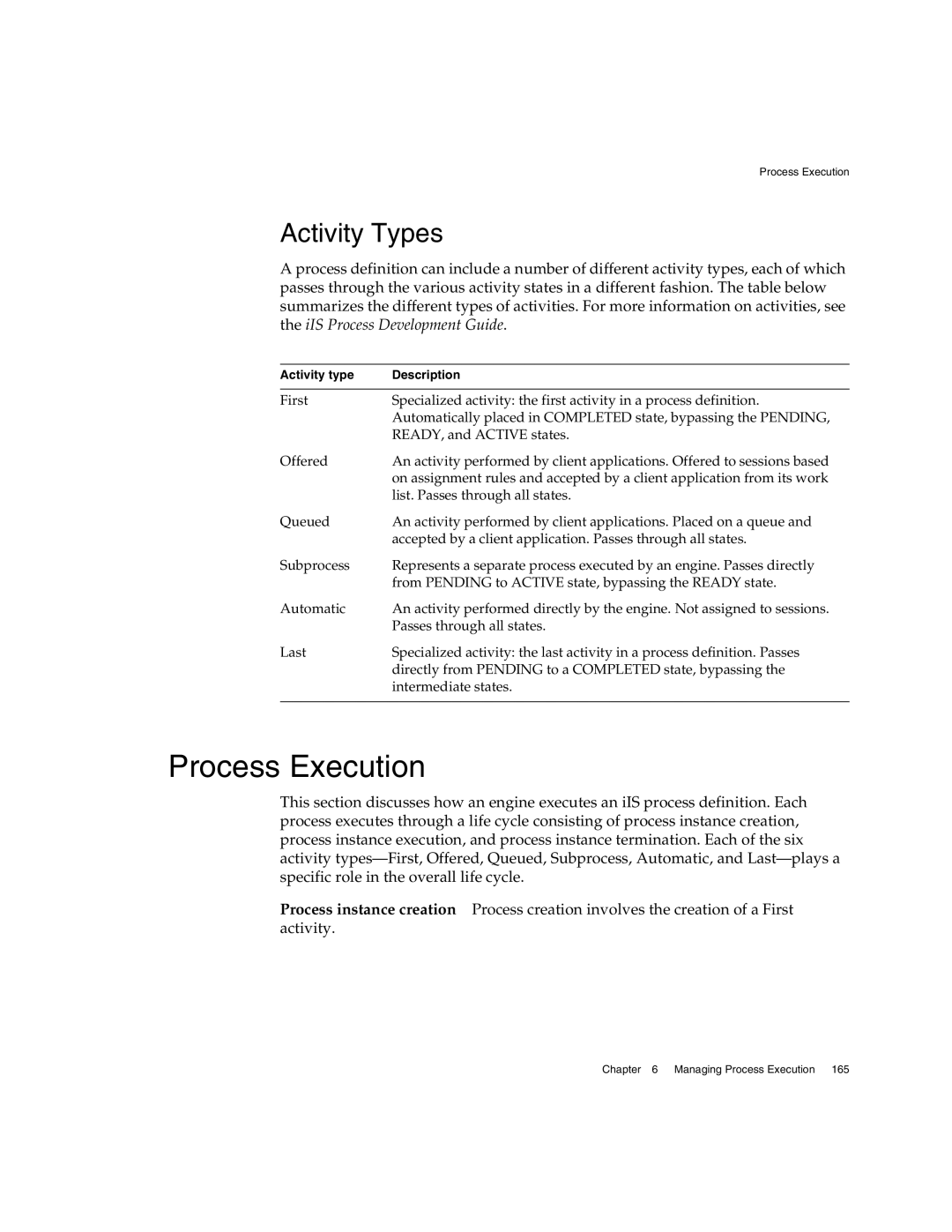Process Execution
Activity Types
A process definition can include a number of different activity types, each of which passes through the various activity states in a different fashion. The table below summarizes the different types of activities. For more information on activities, see the iIS Process Development Guide.
Activity type | Description |
|
|
First | Specialized activity: the first activity in a process definition. |
| Automatically placed in COMPLETED state, bypassing the PENDING, |
| READY, and ACTIVE states. |
Offered | An activity performed by client applications. Offered to sessions based |
| on assignment rules and accepted by a client application from its work |
| list. Passes through all states. |
Queued | An activity performed by client applications. Placed on a queue and |
| accepted by a client application. Passes through all states. |
Subprocess | Represents a separate process executed by an engine. Passes directly |
| from PENDING to ACTIVE state, bypassing the READY state. |
Automatic | An activity performed directly by the engine. Not assigned to sessions. |
| Passes through all states. |
Last | Specialized activity: the last activity in a process definition. Passes |
| directly from PENDING to a COMPLETED state, bypassing the |
| intermediate states. |
|
|
Process Execution
This section discusses how an engine executes an iIS process definition. Each process executes through a life cycle consisting of process instance creation, process instance execution, and process instance termination. Each of the six activity
Process instance creation Process creation involves the creation of a First activity.
Chapter 6 Managing Process Execution 165
